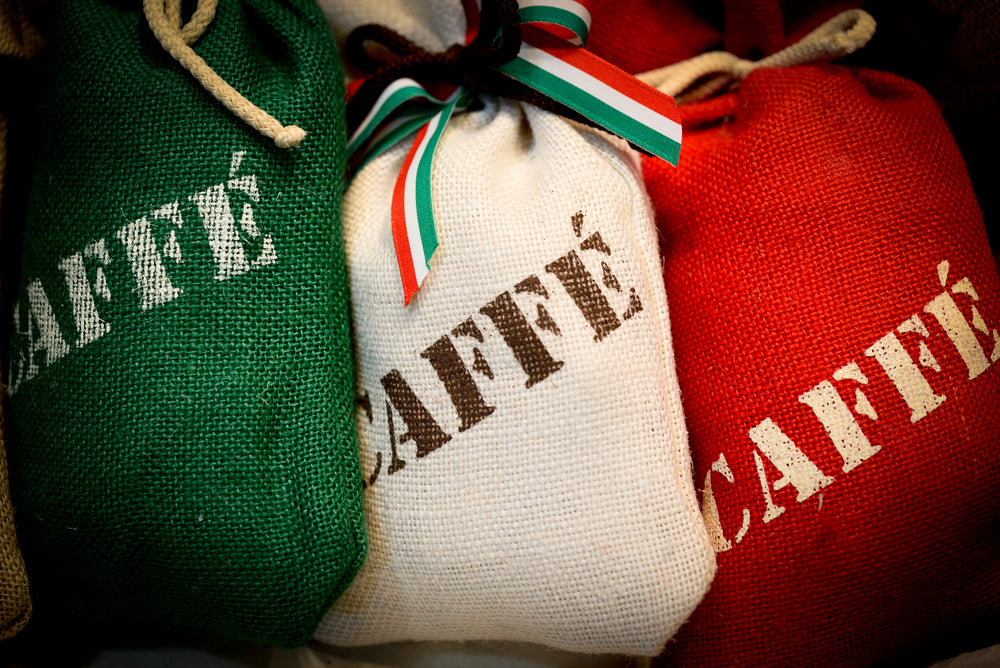Coffee is an integral part of life in Italy, whether it's an espresso with breakfast, a macchiato in the afternoon, or an espresso after dinner. No matter where you’re located in Italy, there’s no doubt you’ll be drinking a wonderful, flavourful cup of coffee.
In Italy, you'll frequently hear the classic Italian phrase "Ci prendiamo un caffè?", indicating that it's time to take a break from work for some espresso or coffee. Italian coffee culture is a particularly social event, generally enjoyed in the company of friends and family.
History of Italian Coffee
Italian coffee has a rich and vibrant history deeply intertwined with the country's culture and social fabric. Coffee culture in Italy has been influential worldwide, shaping the way people enjoy and perceive coffee globally. The history of Italian coffee is a tale of discovery, innovation, and the evolution of the quintessential espresso culture. Here is a brief overview of the history of Italian coffee
The Beginnings
Coffee first arrived in Italy in the 16th century, introduced through the ports of Venice. Initially considered a novelty, it quickly gained popularity among the elite and intellectuals. In the 17th century, coffeehouses, or "botteghe del caffe," began to appear in major Italian cities, becoming centers for social gatherings, intellectual discussions, and cultural exchanges.
Invention of Espresso
The 20th century witnessed a pivotal moment in Italian coffee history with the invention of the espresso machine. Angelo Moriondo patented the first espresso machine in 1884, followed by Luigi Bezzera's improvements in 1901, which laid the foundation for the modern espresso-making process.
Espresso quickly became the cornerstone of Italian coffee culture, with cafes serving as bustling hubs for social interactions, political debates, and artistic movements. The concept of standing at the bar for a quick espresso shot became a hallmark of Italian coffee tradition.
Italian immigrants and traders played a significant role in spreading Italian coffee culture worldwide. From Europe to the Americas and beyond, Italian-style espresso and the art of crafting rich, aromatic coffee became a global phenomenon.
Cultural Significance of Italian Coffee
Coffee in Italy is more than just a beverage; it's a cultural ritual. The "caffè" is a symbol of socialisation, relaxation, and community bonding. It is an integral part of Italian daily life, with specific rituals, terminology, and customs unique to Italian coffee culture.
Italian coffee culture has influenced the establishment of numerous cafes and coffeehouses worldwide, with Italian-style coffee beverages becoming staples in the global coffee scene.
Italian coffee culture gave rise to a multitude of coffee variations, including cappuccino, macchiato, latte, and more. Each of these coffee drinks has its own specific preparation method and cultural significance in the Italian coffee tradition.
Types of Italian Coffee
There are several Italian coffee names and varieties. With so many Italian coffee styles to choose from, it can be difficult to know what to order. To help you decide, here are some of the most popular types of Italian coffee:
- Caffè: A "caffè" is an Italian espresso coffee that is equivalent to an espresso anywhere else in the world. It is a coffee favourite that is enjoyed at any time of day.
- Caffè Doppio: This is the same as a "caffè" but with two espresso shots instead of one.
- Cappuccino: The cappuccino is undoubtedly the most popular coffee drink in Italy, created with Italian espresso, steamed milk, and milk froth.
- Caffè Macchiato: This robust Italian coffee is brewed with espresso and a splash of warmed milk.
- Caffè Ristretto: A caffè ristretto is essentially a stronger caffè. It uses the same quantity of Italian coffee beans as an espresso, but only uses half the water.
- Caffè Americano: This type of Italian coffee is made by diluting an espresso shot with a splash of hot water, creating a less potent coffee drink.
Regional Differences of Italian Coffee
Each region of Italy is recognised to have its distinct Italian coffee culture. Italians in the south prefer their coffee robust and creamy. Northern espresso lovers enjoy a more delicate style of Italian espresso.- Aosta Valley: The caffè alla valdostana, which comprises a blend of lemon peel, cinnamon, sugar, cloves, and juniper, is found in the Aosta Valley. It is poured into a grolla, a wooden cup handed from friend to friend.
- Turin: The bicerin is a renowned Turin drink comprised of coffee, chocolate, and cream in a glass. It's customary to swirl the ingredients together and inhale the aromas before drinking this Italian coffee beverage.
- Naples: Coffee in Naples has a hazelnut flavour, which is a regional component. The cream (panna) is poured first and then topped with hot coffee.
- Sicily: Caffè d'un Parrinu is a unique cappuccino-like drink and is exclusively available in southern Sicily. It features strong cinnamon, clove, and chocolate flavours. Another notable regional Italian coffee found on the island of Sicily is the Granita di caffè. It is a cold coffee drink mixed over crushed ice that is ideal for cooling off on hot days in Sicily.
- Puglia: Puglia Italian coffee is served with an ice cube. In some cafes, the cube is placed directly into sweetened coffee, whereas in others, the coffee is poured on top of the ice cube.
- Padua: The origins of Italian-style coffee in Padua can be traced back to a 19th-century coffee custom known as patavina. This drink blends espresso with cream (panna), followed by a splash of mint syrup and a sprinkling of chocolate.



